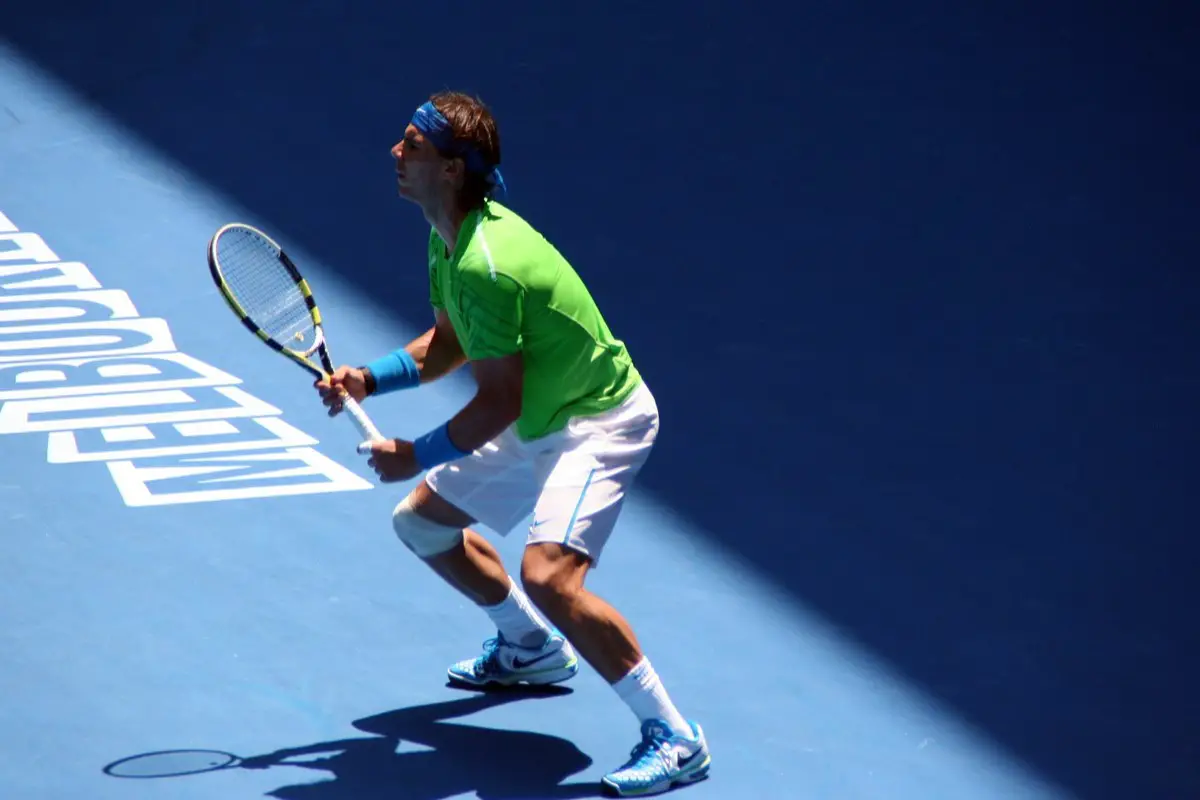In professional tennis, few names shine as brightly as Rafael Nadal. Hailing from the picturesque island of Mallorca, Spain, Nadal has etched his name in the annals of the sport’s history with a remarkable combination of skill, determination, and unwavering resilience. Often referred to as the “King of Clay,” his dominance on the red dirt courts of Roland Garros has become the stuff of legend. Read on to explore more about Rafael Nadal.
The Evolution of a Champion
Rafael Nadal’s ascent to tennis superstardom is a story of talent nurtured through unwavering dedication and resilience. Born on June 3, 1986, on the idyllic island of Mallorca, Spain, Nadal showed a remarkable affinity for tennis from a tender age. Under the guidance of his uncle and coach, Toni Nadal, he honed his skills relentlessly.
Nadal’s playing style is characterized by his exceptional topspin forehand, lightning-quick footwork, and an unyielding work ethic that is second to none. One of the most awe-inspiring aspects of Nadal’s career is his adaptability.
While he is undeniably the greatest clay-court player in history, he has consistently proven himself on all surfaces. His record on hard and grass courts is a testament to his versatility, dispelling doubts about his ability to dominate beyond the clay.
His fierce competitiveness and relentless pursuit of excellence have earned him numerous titles on the world’s biggest stages, including multiple Grand Slam victories on all three surfaces.
The Resilient Champion
What sets Rafael Nadal apart from his contemporaries is his remarkable resilience, both physical and mental. He has battled debilitating injuries throughout his career, including knee and wrist problems, which would have forced many other players into early retirement.
However, Nadal’s unwavering determination and unmatched work ethic allowed him to come back stronger each time. One of his most iconic displays of resilience occurred during the 2008 Wimbledon final against Roger Federer, often regarded as one of the greatest tennis matches in history.
Despite the relentless downpour of rain, Nadal and Federer engaged in a titanic struggle that lasted nearly five hours. Nadal emerged victorious, capturing his first Wimbledon title and ending Federer’s five-year reign at the All England Club.
This victory showcased Nadal’s ability to adapt to different conditions and surfaces, further solidifying his status as a tennis legend. The “King of Clay”: Nadal’s dominance on clay courts is a chapter of tennis history that will be remembered for generations.
His unrivaled success at the French Open is a testament to his mastery of the red dirt. With his relentless physicality and unwavering determination, Nadal has won many titles at Roland Garros, breaking records and rewriting history.
His remarkable 13 French Open titles, as of my last knowledge update in September 2021, is a record that may stand the test of time. Nadal’s clay-court prowess is not merely a result of his powerful forehand or relentless baseline play; it reflects his mental fortitude. His ability to stay focused and perform at his best in the demanding best-of-five-set matches on clay has made him nearly invincible on this surface.
The Rivalries
In tennis, rivalries have always been captivating, and Nadal has been at the forefront of some of the most compelling ones. His battles with Roger Federer and Novak Djokovic have enthralled tennis fans for years, producing timeless classics that will be remembered for generations.
Nadal’s rivalry with Federer is a study in contrasts. While Federer’s elegance and grace on the court are beautiful, Nadal’s relentless determination and physicality provide a stark contrast. Their clashes have transcended the sport, becoming iconic showdowns that define an era of tennis. These contests have showcased the sport’s beauty in its diversity of styles and personalities.
On the other hand, his rivalry with Djokovic has epitomized the modern baseline slugfest. Both players have pushed each other to the limits of endurance and skill, engaging in epic battles that often stretch to exhaustion. Their fierce competition has added a thrilling dynamic to the tennis world, where no point is conceded without a fight.
Off the Court
Beyond the tennis court, Rafael Nadal is a beloved figure known for his humility, sportsmanship, and philanthropy. He has used his platform to positively impact the world, contributing to numerous charitable causes and even establishing the Rafael Nadal Foundation, which focuses on education and social inclusion for disadvantaged youth.
Nadal’s sportsmanship is evident in his conduct on and off the court. He embodies the values of respect, fair play, and integrity, setting an example for aspiring athletes worldwide. His graciousness in victory and defeat has earned him the respect and admiration of his peers and fans.
The Enduring Legacy: As we move into the 21st century, Rafael Nadal’s legacy in tennis is secure. His contributions to the sport go beyond the trophies and titles; he has inspired a generation of players to embrace hard work, perseverance, and sportsmanship. His remarkable journey from Mallorca’s sun-drenched courts to tennis’s grandest stages is a testament to the power of determination and passion.
In conclusion, Rafael Nadal is not just a tennis legend but a symbol of excellence, resilience, and humility. His remarkable career has left an indelible mark on the sport, and his impact will continue to be felt for years. Whether you admire his relentless work ethic, fierce competitiveness, or unwavering sportsmanship, there is no denying that Rafael Nadal is a true icon of tennis, and his story will be celebrated for generations.
Related Articles
Who Has Won All 4 Grand Slams In The Same Year?
The Unbreakable Strength of Rafael Nadal Arms
Djokovic vs. Nadal: The Pinnacle of Tennis Rivalries
Federer vs. Nadal: Tennis Titans and Their Timeless Rivalry
Australian Open: Nadal Quest for Glory | A Tale of Tenacity


